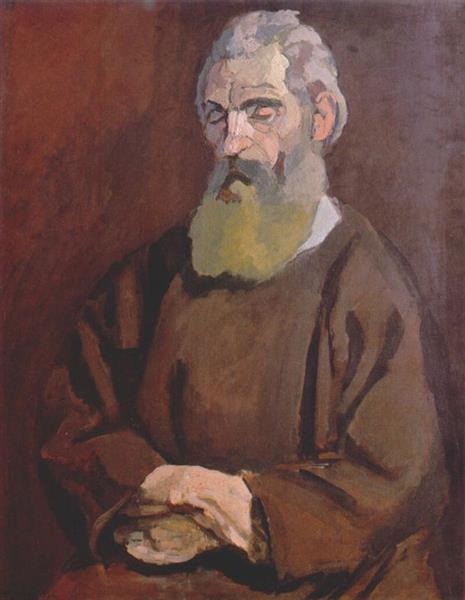Description
Henri Matisse, one of the preeminent figures in the development of modern art, offers us with his work "Meditating Monk" from 1903 a window into a crucial stage in his artistic evolution. The painting, measuring 47x60 cm, captures the serene introspection of a monk in meditation, in a way that only Matisse could achieve.
The central figure of the monk is a manifestation of Matisse's interest in spiritual and human themes, highlighting a moment of inner peace. The monk's posture, with his head bowed and hands together in an attitude of contemplation, evokes an almost tangible tranquility. This aspect reflects the introspective character of the work and invites us to reflect on stillness and meditation.
The artistic composition of "Meditating Monk" is worthy of admiration. Matisse employs a predominant color palette with dark tones, mostly browns and blacks, which soberly contrast with the touches of white in the monk's habit. This use of color not only defines the human figure but also creates an atmosphere of solemnity and contemplation, characteristic of the act of meditating. The choice of brown, an earthy and natural color, reinforces the connection with the spiritual and the simple, while black adds depth and emphasis to the figure.
The work also shows the marked influence of symbolism, a movement that valued the evocation of emotional and spiritual states over literal representation. In "Meditating Monk," Matisse manages to convey an aura of spirituality and inner peace without resorting to too many visual details, allowing simplicity to become the predominant voice of the painting.
Matisse's brushwork already shows signs of a looseness that would later become one of his most distinctive characteristics. The shadows and contours are elaborated in a loose but determined manner, which brings a certain vibration to the piece despite its apparent tranquility.
Compared to other works from the same period, "Meditating Monk" reveals an introspection that would be less evident in his later, more colorful works, where Matisse fervently explored the joy of living through an explosion of colors and forms. However, this 1903 painting, with its mastery of sober color and simplified composition, offers a unique perspective of the artist at a moment of transition.
When observing similar works such as "The Young Sailor II" (1906) or even "Woman with a Hat" (1905), we can see Matisse's progress from a darker palette and more contained themes towards the chromatic exuberance and formal freedom that would characterize him in Fauvism.
"Meditating Monk" is not only a significant work in itself but also a key piece in understanding Henri Matisse's stylistic development. The work encapsulates serene introspection and a deep connection with the spiritual, using an economy of means that highlights the artist's mastery in capturing the essence of his themes. Ultimately, this painting invites us to both visual and emotional meditation, reminding us of the beauty of simplicity and the depth of contemplation.

